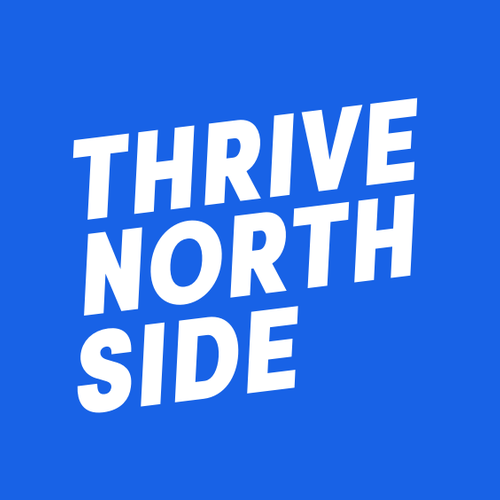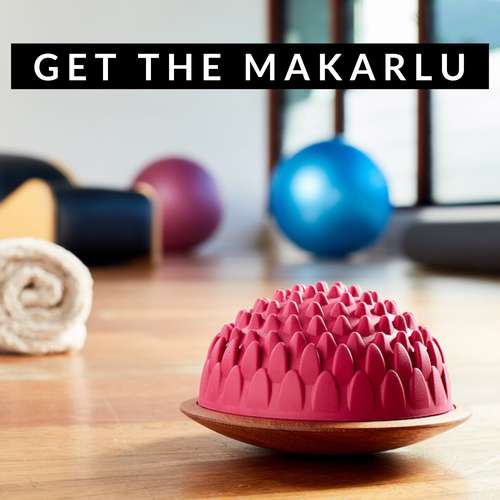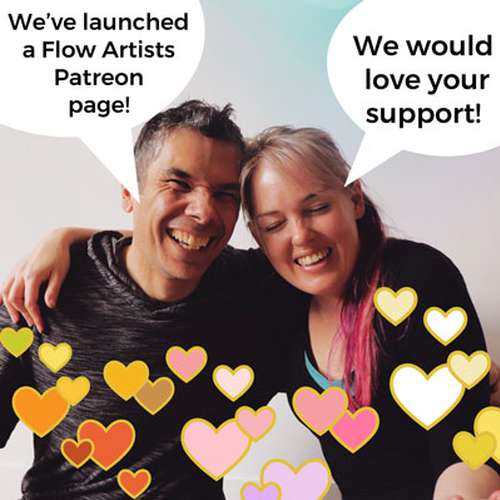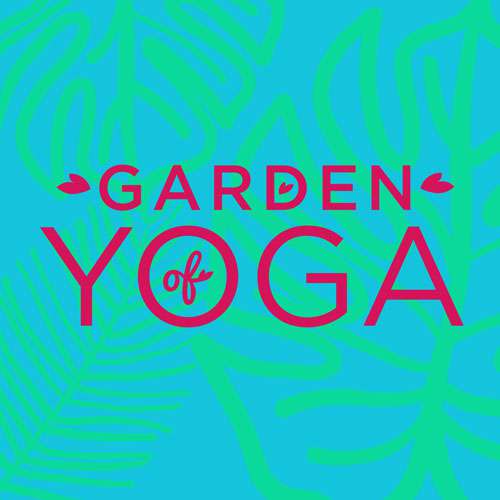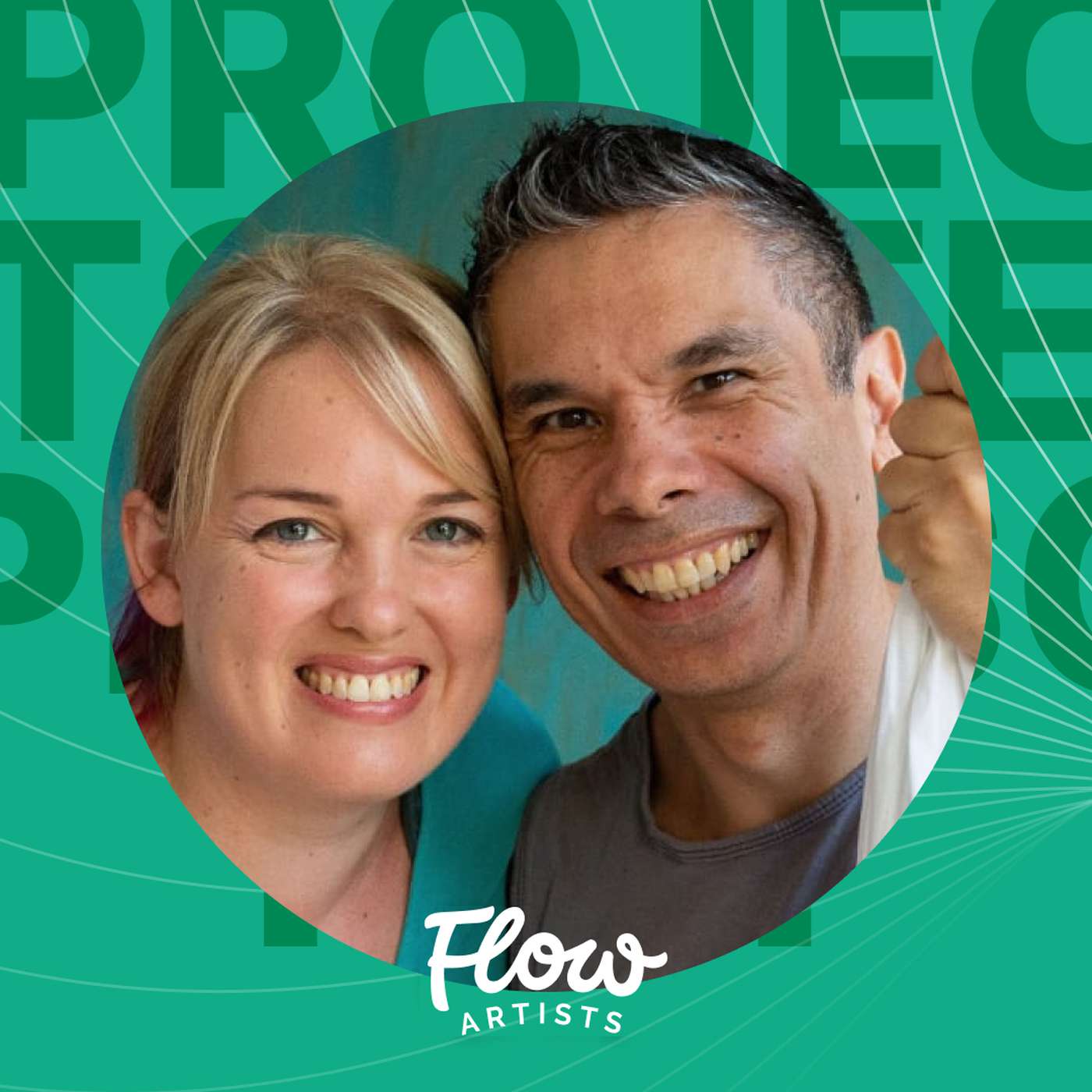
Episode 137
21 mins
Life, Projects, Philosophy
In this episode, Jo and Rane take you through a journey of the creative process, self-discovery, and the intersection of art and wellbeing. We share updates on our personal and professional endeavours, sharing the inspirations behind Rane's SoundMadeSeen app and Jo's forthcoming book on aerial yoga.
One of the episode's highlights is the discussion surrounding Rane's SoundMadeSeen app, which generates dynamic visuals and video content from podcast audio. We delve into the app's development process and its potential to enhance the auditory experience with visual elements. Jo's progress on her book about aerial yoga also provides valuable insights into her aim of making this practice accessible to diverse populations, emphasising its sensory benefits.
We also touch on our recent trip to New Zealand, where we experienced the awe-inspiring "Wharenui Harikoa" crochet art installation. Our reflections on this immersive sensory experience underscore the power of art to connect individuals with their surroundings and themselves. Additionally, the conversation with guest Claire Holloway on applying yogic principles to parenting offers a thought-provoking perspective on embracing the present moment and letting go of expectations in the parenting journey.
We also reflect on the challenges of maintaining a consistent podcast schedule and our decision to transition to a monthly release schedule.
LINKS
SoundMadeSeen: https://soundmadeseen.com/
Podcast mailing list: https://podcast.flowartists.com/
Garden of Yoga Website: https://gardenofyoga.com.au/
Aerial Yoga Therapeutics: https://aerialyogateachertraining.com/our-courses/ Use our code GARDENOFYOGA to get a free online mentoring session valued at $200 (and offered in multiple languages!).
Claire's links:
The Centre of Bright Beginnings
Website: https://www.yourbrightbeginning.com.au
Socials: @yourbrightbeginning (instagram and facebook)
Yoga Philosophy for Parenthood Course (hosted by Bliss Baby Yoga): https://blissbabyyoga.com/yogaphilosophyforparenthood/
Transcription
Please email us to report any transcription errors
Rane Bowen: Hello, I'm RaneJo Stewart: And I'm Jo,
Rane Bowen: And this is the Flow Artist podcast. Together we speak with extraordinary movers, thinkers and teachers about how they find their flow and much, much more. But before we dive in, we want to take a moment to acknowledge and honour the traditional owners of the unceded land where this episode was recorded. The Wurundjeri people of the Kulin nation. We pay our deepest respects to the elders, both past and present, and acknowledge the emerging leaders within their community. So this is just a quick episode to get up to speed on what's going on with us and our plans for 2024. And we'll also be sharing some bonus content from our Patreon, some wonderful insights on yoga and parenting with Claire Holloway. And you might remember we did an episode with Claire a few weeks ago and we asked her a special bonus question, and I think it was a really good question and answer, so we wanted to include that in its own little thing, which we will do at the end of this episode. Alrighty. So, Jo, how's your year going so far?
Jo Stewart: Oh, it's been really good so far, Rane! As you know, we recently got back from a trip to New Zealand together, and that was really beautiful. We missed a lot, lot of Melbourne Heat wave, which was nice. And we also got to cheque out Splore festival, which was so fun. It was the most dress up commitment that I've seen from any of the festivals that we've been to. And I love that, especially the family dress ups, because it was pretty family friendly festival, and there were lots of parents and kids all in their little matching outfits. It's on a really beautiful beach, so all the music stages were kind of pretty much on the shore. So you could swim in the sea and listen to the music, or sit on the hill and listen to some tunes and see the ocean. Yeah. So that was like a really fun and creative and inspiring start to the year, and super grateful to have had that opportunity to cheque it out. Definitely would love to go back sometime. It was also a really great chance to cheque out this artwork that I'd just seen online, but I was already really fascinated by. Do you want to introduce that?
Rane Bowen: So was that Wharenui Harikoa that we went and saw in Waikato museum? Yeah, that was really cool. You probably want to talk about that.
Jo Stewart: Yeah, I wanted you to say the name. So it's by Lissy and Rudy Robinson, who are so Maori 3d crochet artists, and it's a big installation. So Whare nui, is that a traditional meeting house?
Rane Bowen: Yeah. So whare nui? Whare means house and nui means big. So it's a big house. And it was a, you know, rather sizable room.
Jo Stewart: Yeah. And, like, a lot of the crochet installations were deities and also people from their own lives who they were grateful for and inspired by. The translation of the name means house of joy. And it was in these really bright, vibrant colours. And to protect the artwork, you weren't allowed to touch the sculptures or the walls, but traditionally you would take off your shoes anyway. And in this particular installation, the floor was really soft as well, so you still had the tactile experience of being in this really, like, nurturing space created from love and reverence. And there was a soundtrack as well. So that was a really special thing to cheque out in person.
Rane Bowen: Yeah, it was great. And I know you weren't supposed to touch anything, but I did see a guy sneakily hongi or press his nose against one of the pieces as well, so that was pretty funny.
Jo Stewart: Yeah, yeah. I think everyone had, like, everyone we saw in there seemed to have, like, a real connection. Like, it was that type of artwork. Like, you don't just stand back and look at it like you really immerse yourself in it. So it was really special to be able to do that because the photos themselves are amazing, but, like, having that full body sensory experience with something else.
Rane Bowen: Absolutely.
Jo Stewart: All right, so what else has been going on, Rane, how's your app?
Rane Bowen: So, yeah, SoundMadeSeen has been going well. I launched on Appsumo near the end of January, and I've had a few sales from that, a fair few. And so, you know, that's progressing nicely. And the benefit of having customers is that they ask for different features and want different things and also want things to work properly. So I've been fixing lots of bugs and implementing lots of new features, and I think it's at a pretty good stage at the moment. A lot of people are using it for their podcasts. I'm also finding a lot of church groups are using it, which is kind of interesting. So, yeah, it's been a really interesting and fun experience so far.
Jo Stewart: And, yeah, so for people who maybe haven't seen the posts we've been sharing from the podcast that we've been using sourd made scene to create just a brief description of the inspiration for this app. Anyone who makes a podcast might have experienced the chore that is going through a really long episode, like maybe an hour or more of talking to pull out a little chunk to do some social media sharing with. And then also the challenge of how do you make what is basically just audio into something that's fun to look at and dynamic and maybe kind of captures a bit of the energy of that speaker or of that text. So do you want to like share some of the things that you can actually do with this app to help turn words into visuals?
Rane Bowen: Yeah, absolutely. So, yeah, it's got some AI happening behind the scenes. So firstly, you can upload your audio and then you can, or you can record it in the actual app. Then you can have it transcribed so it can transcribe in up to 20 different languages at the moment, though more should be added soon. And then once you've got a transcription, you can actually analyse your text. And this is where I think it gets pretty cool. So it can give you a synopsis of the recording, whatever it might be. We use that for our podcast and it can also work out which bits might be the best bits to share and it will create clips for you from, from those bits. And also, as well as that, you can use it once it's analyse your text to generate things like podcast show notes or blog posts or even newsletters, and it'll do nice summaries. And I've made it so you can change the, I guess, the tone of the, of the text that it outputs. And some of these, I've put a humorous tone in there and some of those tests that we've done have come out maybe a bit more unintentionally humorous than we intended.
Jo Stewart: We now have a new phrase in our in joke vernacular, which is butter my backside and call me a biscuit.
Rane Bowen: Yeah, that's, that's the type of thing it can generate. So don't hold that against it. But I do find, you know, I wouldn't use the text verbatim. It is a good starting point, but yeah, as well as this, it can generate videos and you can, you've got a little design editor where you can sort of change your design and put text and subtitles and waveform visualizers and progress bars and all that sort of fun stuff in and output videos at the end and. Yeah, so it's been going pretty well. I think it's pretty fun. I've been having a good time and yeah, hopefully I can make a little bit more money doing it.
Jo Stewart: Yeah, by having a good time. Rane's been kind of working seven days a week for quite a long stretch, getting it to the stage that it's at now. So it's really awesome to see what he's created and to see people using it in real life. And if you want to cheque it out for yourself, where could people find out more about SoundMadeSeen Rane?
Rane Bowen: Yeah. So just go to soundmadeseen.com. So that's soundmadeseen.com and you'll get everything you need to know.
Jo Stewart: And there's like a little free trial that people can do, right?
Rane Bowen: Absolutely, absolutely. And it's also on Appsumo, so you can get a lifetime deal for that as well. But you're best off just going to the website and you can find the link there.
Jo Stewart: Cool.
Rane Bowen: Cool. So I know you've been pretty busy as well. Jo, how's your book coming along?
Jo Stewart: Oh, pretty good, thanks, Rane. I recently finished a little mountain of finally writing out all of my aerial yoga pose descriptions, which has been very much a chip away at it part of this project. I guess I could rewind a little bit and tell people what my book's about. It's a non fiction book about aerial yoga. It's called eight limbs of aerial adapting practise for accessibility, neurodiversity and physical support. And it's really inspired by all of the things that I really love about aerial yoga, mainly the ability to make the physical, but also emotional and even spiritual benefits of yoga accessible for more people with the support of the fabric. But a lot of it is stuff that I don't necessarily see shared online, and I know that a lot of people are not finding is covered in their own aerial yoga teacher training. So a lot of aerial yoga trainings, they're quite short and it's more about just, this is how you use the hammock and these are the poses. So there's not necessarily a lot of room to how you bring yoga philosophy into all of this. And I do find that the aerial yoga hammock create space for meditation in a really beautiful way. So that's something that I did really want to emphasise. I'm just really fascinated by sensory processing, and there's lots of opportunities for that with the fabric, whether it's a deep pressure feeling, or being able to work with your vestibular system in different ways by going upside down or spinning or swinging, or even just using the hammock to hold onto, to make standing poses more accessible. I'm also really inspired by a lot of different health and movement professionals who are maybe outside of yoga, like occupational therapists and physiotherapists who are bringing the aerial hammock into their own professional practise. And I wanted to share that, but also provide a resource for those types of people who haven't done yoga training but are kind of sharing yoga practise to be a bit of a bridge like, not that this book is equivalent to doing a yoga teacher training, but I feel like it's a little bit more of a connection than just picking up a yoga philosophy book and diving into that, because it's that link between the physical practise that they're already doing and then the philosophical layers that sit beneath that. I'm also bringing in the way I teach, which is thinking about the benefits of the pose that I want to share, and then how I can use the hammock in different ways to make that accessible for different people. So in the pose breakdown bit that I've just finished, it's like, say it's adha mukha svanasana, downward facing dog pose. There's so many ways you can use the hammock to bring your body into a shape to get the benefits of that pose. So I'm kind of sharing it like that, where it's not like, oh, this is the beginner's level and this is the advanced level and this is what you can do if you don't do those poses. But it's like, here's all these different ways to get these benefits for different bodies and different needs. So I'm really excited to share that. It's a pretty big project and I've realised two things about myself. Firstly, how long winded I can be, because my outline was 55,000 words and I'm up to over 50,000. And I'd say I'm between two thirds and three quarters of the way through everything I was planning to write and how hard I can procrastinate over doing something that I actually really want to do. Every playlist in my Spotify day at the moment is a focus playlist and I'm getting there, but it takes me so long to get in the zone sometimes.
Rane Bowen: Nice. Nice. Well, you've still got the edit stage to get through, so.
Jo Stewart: Oh, my gosh. And from all the authors who've spoken to, everyone's like, I thought the writing was going to be the challenging bit, but then I got hit with the editing, so it's like. But I'm actually super grateful for Donna Noble for connecting me to her wonderful editor, because I really love her book teaching body positive yoga. So I feel like I'm in safe hands, hopefully. But, yeah, we'll see how hard I can procrastinate when it comes to the editing phase.
Rane Bowen: Time will tell, and we have been blessed to talk to a lot of authors on this podcast. So, yeah, one thing I always find is just great. Essentially getting a free masterclass every time we do an interview. It's so good.
Jo Stewart: I don't think I'd be writing this book without the podcast. I think it really made me feel like it was possible for me. It made me feel inspired, and also it really helped me with connections to take that next step from inspiration to action.
Rane Bowen: Nice. Nice. So, speaking of the podcast, we've got a little bit of an update. So you might have noticed we've been a little bit inconsistent with a little bit loosey goosey. Yeah. Yeah. You know, there's been various reasons we've been very busy doing our projects. It's been holidays and all that type of thing. I think we got COVID just before Christmas, so a lot of things have happened. But what we intend to do is from this episode, you might have noticed that it came out on the first Monday of the month. That will be our new schedule. So every month, first Monday, we'll try to get an episode out.
Jo Stewart: Yeah, I think we consciously let go of a schedule for a while just because that's what felt sustainable for us to keep the podcast going at that time. And through that, letting go of a schedule, we just kind of settled into this natural rhythm of like, oh, yeah, I think maybe one episode a month is actually the right rhythm for us. So hopefully it will be that for you as well. And we already have some really exciting guests lined up for the new year, so look out for that. Hey, jo here. Just popping back in with a few more things I wanted to mention before we get to our question with Claire. If you'd like the chance to learn directly from some of the aerial yoga experts who I feature in my book, including my main teacher, Renae Stevens, there's a new round of aerial yoga training starting soon. This includes the 50 hours aerial essentials, 50 hours advanced aerial, and the 100 hours aerial yoga therapeutics teacher training, or a 200 hours package that combines all of these courses. And you can learn entirely online. Or there are in person immersion options if you can get to the Gold Coast hinterland, which is gorgeous here in Australia. This training is for yoga teachers, movement instructors, and health professionals who want to learn more about the therapeutic benefits of the aerial hammock and tap into the wealth of wisdom from the teaching team, who are all using this wonderful prop in different ways. In their professional practise. I'll definitely be sharing more about this as we're now ambassadors for this training, but I just wanted to give you a quick heads up because the first in person immersion starts in June 2024. To find out more you can head to aerialyogateachertraining.com/our-courses and use the Code GARDENOFYOGA which is all one word at the payment phase, to get free online mentoring session with one of the teaching team valued at $200. I'll be popping all these links in our show notes which will now also be shared sharing via email to our mailing list. If you'd like a little reminder when each new episode drops, including the bonus episode that we might be sharing this month and the chance to contribute questions for our more interactive episodes in the future, and just any other exciting news that we might have, you can sign up at podcast dot flowartist.com. Just scroll down our website to find the link at the bottom and I'll also be including this link in our show notes.
Rane Bowen: Nice. Alrighty. So I guess from here we'll just lead on to our question from Claire, and I think it picks off with me actually asking her the question. So here you go. So Claire, what, in your opinion, is the single most important thing that parents, or soon to be parents, can take away from yogic philosophy?
Claire Holloway: Wow. Hitting me with a big one now. So although the programme I've written is from the yoga sutras, the one thing that I always come back to is from the Bhagavad Gita. And I think because it encompasses a number of the Yama and Niyama and other concepts into one. And that is the idea of I won't be able to quote you immediately. Sorry, I'm not great with remembering quotes, but it's an underlying theme in the Bhagavad Gita of letting go of the expectations of the fruits of our actions, that's still acting. And that is the whole journey of parenthood. I think the transition, the matrescence journey, throws everything out the window. It throws your identity out the window. So your stature pain is gone. Like, who am I? What is my truth now? It throws, it throws you into this world of parent guilt where you keep second guessing yourself because there's no guidebook and the only way to navigate parenting is learning on the job, and every child is different. So even if you have one child and you think you've got it sussed and you have another one, then I can speak from my youngest tornado child to get thrown for six so it really supports me and it really keeps me sane to remember that I should keep acting and I should keep trying. For me, that acting in the trying links together, and that if I watch what happened after my action and I see it wasn't an ideal outcome, that I am allowed to let go of that and try again the next time, but also that I can learn from that. That's when I can put in all those other tools of yoga we were talking earlier about Pratipaksha bhavana. And so you can go, oh, okay, that's one of my samskaras, or that's one of my patterns that I'd like to change. And then you come back to the action. So, yeah, I think that, for me, would be, number one, beautiful.
Jo Stewart: That sounds like such great life advice, even if you're not a parent as well. Let go of the perfectionism and focus on the action. And if it goes wrong, learn from it.
Claire Holloway: Yeah. And it doesn't have to be too much more complex than that, really, does it? I'm very good at making it more complex than they have to be. But go back to another one of the knee armour it can be a part of saucha is, although satcha is purity, I also like to think of it as simplicity so we don't have to make things too complicated. And part of that is letting go of the over questioning of ourselves as well.
Rane Bowen: Beautiful.
Jo Stewart: Thank you so much for that wisdom you just shared.
Rane Bowen: All right, well, thanks so much for listening. If you'd like to hear more from us, you can find me on Instagram, @ranelovesyoga and Jo @gardenofyoga. Or you can learn more about our studio at gardenofyoga.com.au if you'd like to.
Jo Stewart: Practise with us, we do regular in person and Zoom classes. Or you can get this amazing lifetime access deal to our online library of over 240 classes for just $89.
Rane Bowen: Special thanks to our patreon supporters. Your donations help us cover editing and hosting costs, and we appreciate you so very much.
Jo Stewart: We'd like to express our gratitude to ghost soul for granting us permission to use their track baby robots as our theme song. Be sure to cheque out Ghostsoul dot bandcamp.com to discover more of their awesome music.
Rane Bowen: Once again, thank you so much for spending your precious time time with us. We appreciate you more than words can express here. Arohanui maua kia koutou katoa sending you big, big love.

